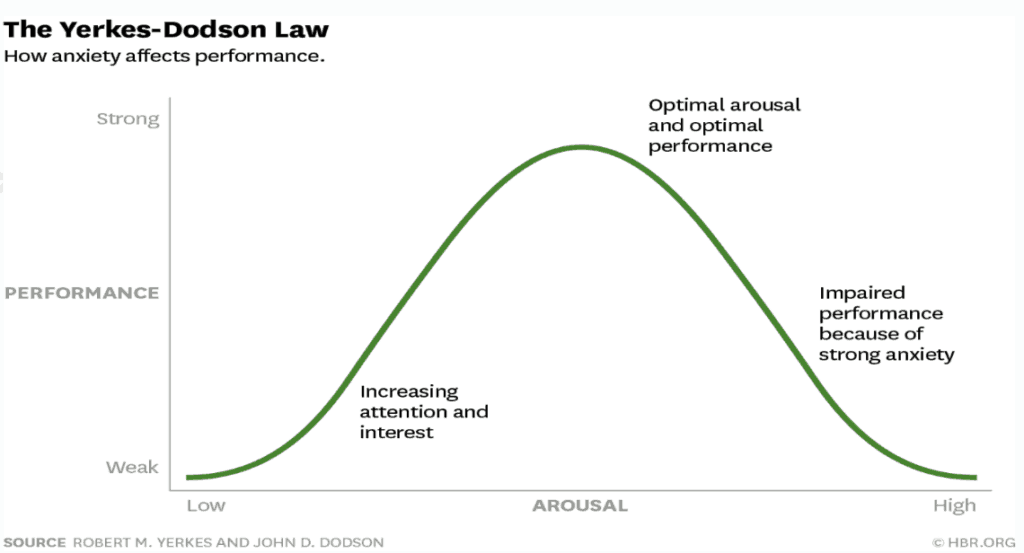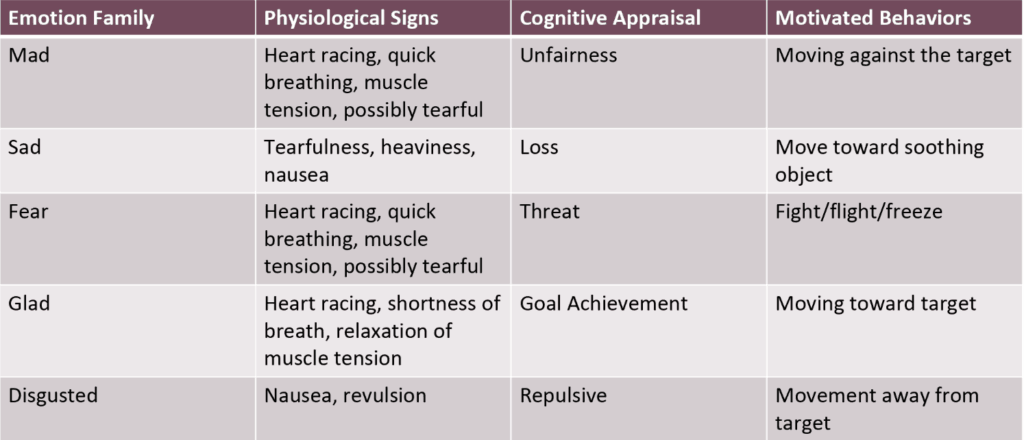Anxiety Therapy Services
Anxiety is an emotion related to the Fear family of emotions. When a person experiences fear, they are recognizing a real threat in their environment. Fear keeps people safe by reasonably pointing out dangerous situations. When a person experiences anxiety they are inappropriately appraising too many threats in their environment or assuming that a negative outcome will happen. Dr. Calbeck uses CBT helps clients learn to distinguish between reasonable fears and unproductive anxiety.
Anxiety is in the Fear Family of Emotions
-
Students who experience anxiety perceive the test as a threat
-
Students often respond by attempting to avoid or control the feared event
-
Students may cry and show difficulty regulating emotions
-
Motivates us to move outside our comfort zone and helps us learn new skills
-
Kids may show argumentativeness or defiance, or seem angry
-
Some students experience physical symptoms: nausea, headaches, shortness of breath
-
Difficulty sleeping may start or worsen</p.
-
Kids may seem inattentive or report their mind “goes blank” and they cannot show or recall what they have learned
Coping with Performance-based Anxiety
-
Put the worried thoughts into words and/or art so that the concern can be identified and discussed
-
Use the WORRY TIME technique
-
Think encouraging thoughts using evidence: “I’ve done well on tests before”
-
Teach kids to use logic or to dispute the worried thoughts by discussing
-
Evidence for and against the worry
-
Likelihood of the worry coming to fruition
-
Make a plan for getting through the worried outcome
-
Talk back to the worry bully (dispute the anxiety-based thought)
-
Reframe the worried thought
Taking the Anxiety Out of Testing
Benefits of Fear
-
Concern alerts a person to threats and dangers in the environment
-
Concern elicits planning-based coping skills and problem-solving skills
-
Moderate stress can increase self-awareness
-
Motivates us to move outside our comfort zone and helps us learn new skills
-
Excitement is a positive stress feeling (e.g., eustress), motivating people to try something new
Moderate Arousal Improves Performance

Evidence: For & Against the Worry
-
Worried thought: “I will fail this test.”
-
Evidence for: I got a C on a quiz; I missed questions on iReady; the teacher told me I have to focus and I can’t; I have to take it for an hour and that’s too much;
-
Evidence against: I have passed tests before; I studied for this test; I practiced for this test; I have passed quizzes before; I have not failed a test before
Probability and Context
-
Has this child passed the standardized test before?
-
Although it would be problematic, failing a test is not a catastrophic outcome. Doing poorly on a test can help a student receive targeted interventions or point to possibility of an area of concern that we can deal with.
-
Making mistakes is not fatal, especially in the academic context. Teach kids to expect some errors and learn to edit their responses.
Worry Time
-
The Worry Time schedule helps children spend less time practicing anxiety-related thoughts.
-
Lasts 15 minutes. The student can sit with a trusted grown-up and listen to worried-thoughts without interruptions or distractions. Parents ought to listen & reflect, then elicit solutions. Parents can try to add solutions.
-
Outside of Worry Time, the student is encouraged to put worries in an imaginary locked box in their minds.
-
Rule: NO THINKING OR TALKING ABOUT WORRIES UNLESS IT IS WORRY TIME.
-
Rule: DO NOT ANSWER WORRY QUESTIONS UNLESS IT IS WORRY TIME. Refer the questions to Worry Time.
-
Over time, Worry Time can decrease as fewer worries are practiced
Talking Back to the Worry Bully
- Worries are like a bully that tries to give the student a hard time. Worry bullies present the most terrible thing and pretend that it will happen. Tell kids that worry bullies lie.
- Children are asked to draw a worry bully who sits on their shoulder and whispers worries: a monster, a dark cloud, a dark blob, etc.
- Encourage kids to talk back to the worry bully by disputing the worry bully.
- Help kids create a list of things to do while ignoring the worry or after disputing the worry bully
- Use art (drawing, song writing/singing) or play to reinforce the worry bully
going away
Make a Plan for the Worry-inducing Event
Regarding test-related anxiety, help kids establish a plan of how to cope with their worry:
- Use logic
- Identify evidence for & against
- Evaluate the probability & context
- Use worry time
- Talk back to the worry bully & tell it to GET LOST
- Re-set using activity followed by relaxation
- Keep a comfort/anchor object – a kiss that doesn’t come off, a good luck temporary tattoo, a small lucky rock in the pocket.
The Power of Modeling
- Do you as a parent feel overwhelmed with work-related stressors? How do you communicate this at home?
- Test anxiety can come out of left field or it can be related to the way parents approach stress
- Are parents or other important adults unknowingly modeling anxiety-based responses to performance demands?
- Look at the manner in which you & other important adults talk about performance and praise your child. Are you focused on their grades or effort? Are you encouraging their “right” answers or the manner in which they think about how to solve problems? Do you encourage “perfect” responses or process how making mistakes can help with critical thinking?
Re-setting the System: Activity and/or Relaxation
- Re-setting means to do something to change the way the body feels
- Use a re-set activity after using logic or disputing the worried thought
- Activity
- Regular exercise/sports participation
- Art/Music/Dance
- Yoga
- Riding a bike or a scooter
Relaxation: progressive, guided, or mindful/regulated breathing
Changing from the Anxiety Channel to the Happy Memory Channel
Resources
School counselors or school psychologists can help
Talk to the teacher about your child’s concerns
Psychotherapy
Rule-out learning problems (ADHD, Reading Disorder, etc.) or address learning differences
Books From APA’s Magination Press (APA.org):
- Annunziata & Nemiroff, Sometimes I’m Scared (2009).
- Huebner, D., What to do when you worry too much (2006).
- Moss & DeLuca-Acconi, School Made Easier: A kid’s guide to study strategies and anxiety-busting tools (2014).
Schedule an appointment for anxiety therapy treatment today in person in Miami, Miami Beach and virtual appointments offered for all Florida residents.
300 W. 41st Street
Suite 213
Miami Beach, FL 33140

